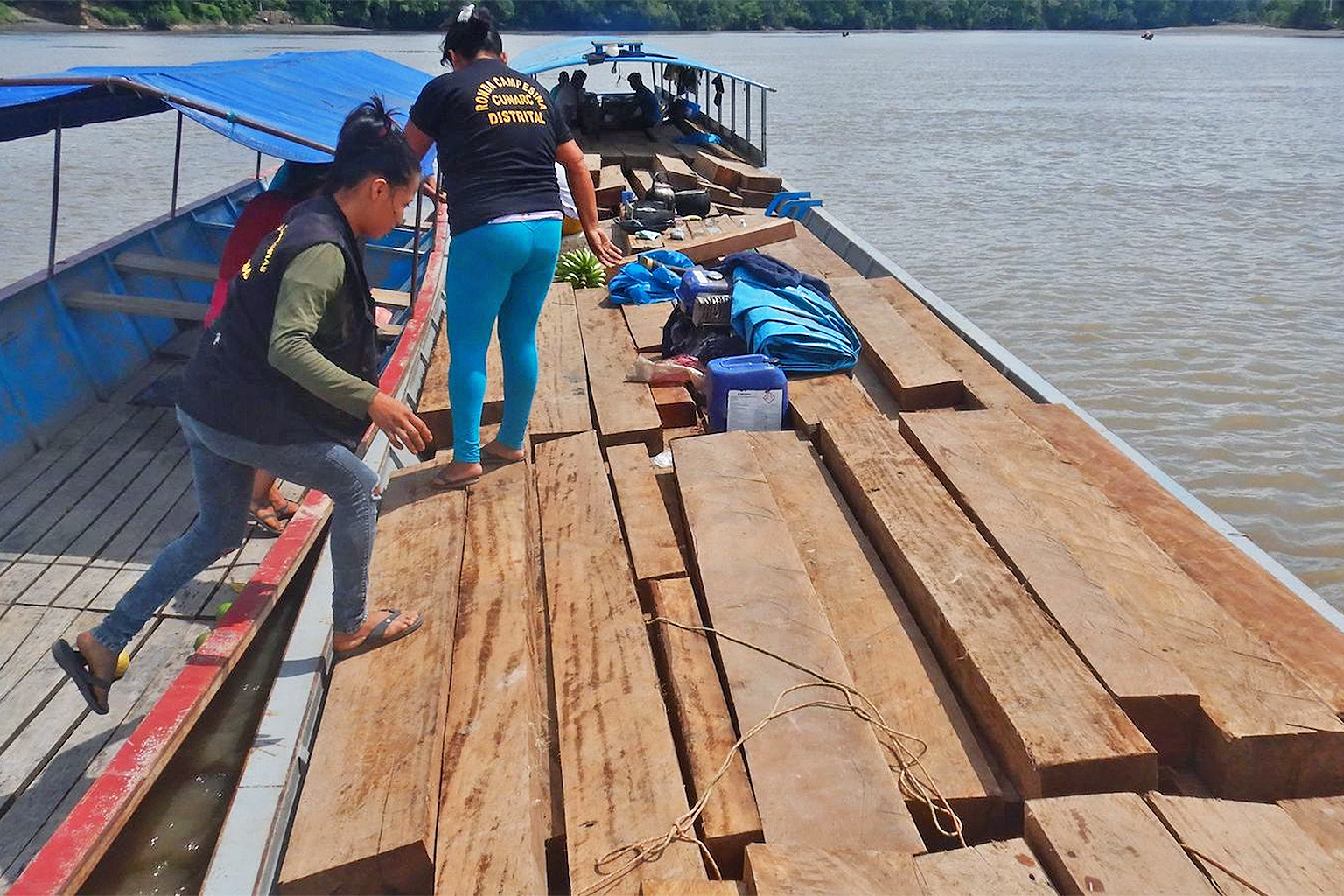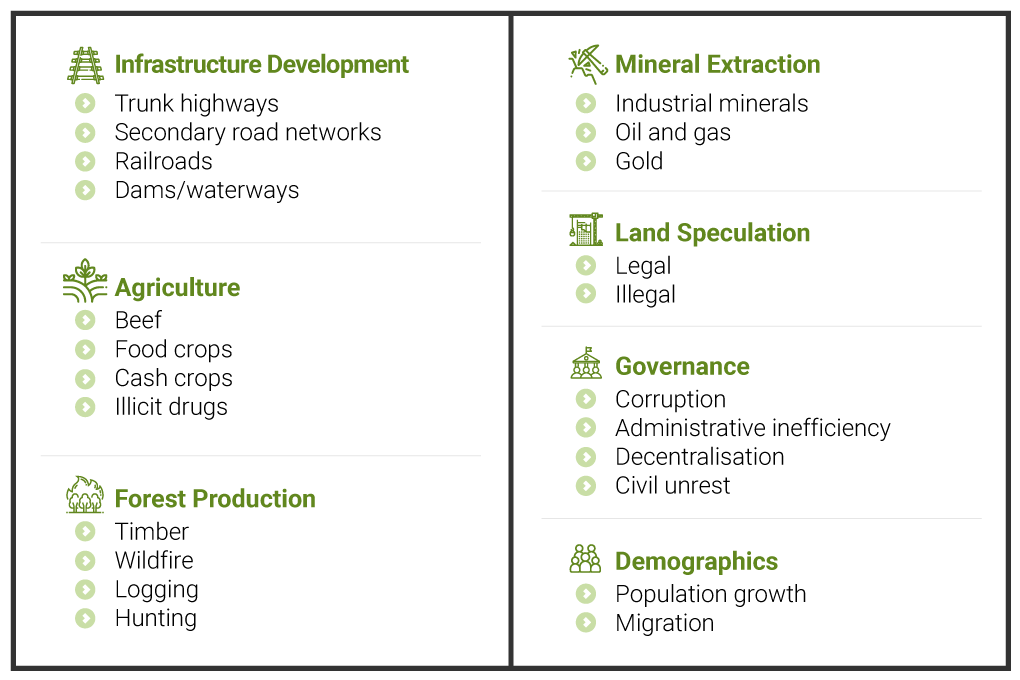- Mongabay has begun publishing a new edition of the book, “A Perfect Storm in the Amazon,” in short installments and in three languages: Spanish, English and Portuguese.
- Author Timothy J. Killeen is an academic and expert who, since the 1980s, has studied the rainforests of Brazil and Bolivia, where he lived for more than 35 years.
- Chronicling the efforts of nine Amazonian countries to curb deforestation, this edition provides an overview of the topics most relevant to the conservation of the region’s biodiversity, ecosystem services and Indigenous cultures, as well as a description of the conventional and sustainable development models that are vying for space within the regional economy.
- Click the “Perfect Storm in the Amazon” link atop this page to see chapters 1-13 as they are published during 2023.
Why do people clear forest? To anybody who has lived on the forest frontier, the answer is as simple as it is obvious: it is essential to the livelihoods of the region’s inhabitants. In some cases, it may be to grow food to feed a family but, more often, people clear forest to generate wealth by selling timber, cultivating a crop or raising livestock. The flow of goods between rural and urban societies is as old as civilization, but in today’s global economy the connection between the producer and the consumer is mediated by a supply chain that is complex and not particularly transparent.

For the last several decades, increases in demand for food and fibre have been met by the expansion of agricultural supply chains into tropical forest wilderness. Producers operating on these landscapes are responding to global demand for the goods they produce; they are acting in their own self-interest to create wealth for their families and jobs for their communities. Many are fully aware that deforestation is a global problem but maintain that they should not bear the cost of conserving biodiversity or fighting global warming, especially when wealthy nations have sacrificed their own forest and polluted the atmosphere in pursuit of economic growth. A common refrain, voiced across economic spectra, is that wealthy nations should assume the cost of forest conservation.
Many consumers in wealthy nations are concerned about tropical deforestation, and some express a willingness to pay for conservation measures. Nonetheless, many are unaware that the food they eat or the shampoo they use has been manufactured using products that originate from recently deforested landscapes. Consumers are isolated from producers by a host of middlemen, manufacturers and retailers, all of whom benefit from, and contribute to, the commercial forces that drive deforestation. Similarly, consumption of mineral commodities, such as iron ore, aluminum and petroleum, have contributed to the degradation of the forests and waters of the Amazon. The extractive industries impact the forest directly by operating mines and oil fields and indirectly when those facilities create access that opens the gateway for migration and the expansion of the agricultural frontier. Financial institutions and individual investors who lend money or own shares in mining or petroleum corporations or agribusiness firms also share the responsibility for environmental degradation.

Deforestation is influenced enormously by the dynamics of rural real estate markets. Primary forest has value because its timber can be harvested for cash income but, once logged, land is referred to as ‘unproductive’ or as having ‘productive potential’. In contrast, pastures, plantations and cropland are considered to be ‘productive land’ because they generate revenue. This may seem perverse to an ecologist who understands the potential long-term productivity of a forest, but clearing land generates cash flow over the short term and adds value to real estate assets over the medium- and long-term.

Public policies also foster deforestation. Most Amazonian countries have legal mechanisms for transferring public land to private individuals that explicitly allow – or even require – deforestation. Similarly, small-scale deforestation and the use of fire is either allowed or openly tolerated in almost all Amazonian jurisdictions. Local and regional governments, with the support of multilateral development agencies, build roads in wilderness landscapes where it is implicitly understood that land speculation will invariably lead to deforestation. These policies remain in place because they enjoy the support of the economic interests of construction companies, landholders and agribusinesses, as well as the electoral power of landless peasants seeking a pathway out of poverty. Rhetoric supporting forest conservation is widespread, but acting to curtail deforestation is politically perilous. The potential for a political movement to drive deforestation is exemplified by the election of Jair Bolsonaro, who campaigned on a promise to reverse the conservation policies of the previous three decades.

Culture also plays a role. Consider the pioneer who created a successful farm over a lifetime of hard work and is understandably proud of that accomplishment. His or her children and grandchildren are likely to have similar views – even if they now also hold views supporting forest conservation. Frontier societies are populated with individuals who believe conventional development is beneficial, a life-view reinforced by educational systems and spiritual leaders.
Corruption is another obvious accelerant to the forces driving environmental degradation. The Lava Jato scandals associated with the construction of public infrastructure projects revealed how graft distorted economic feasibility studies for projects that might have been rejected based solely on financial criteria. It is often assumed that improved governance will empower environmental advocates and slow deforestation, but initiatives to decentralize administrative processes place decisions in the hands of local politicians who tend to favor conventional business models.
Geographers and economists have created a classification system and lexicon to facilitate the discussion about the drivers of deforestation. The term ‘proximate causes’ refers to those phenomena and actors directly responsible for deforestation; typically, these are on or near the landscape being impacted by development. In many cases, there is an obvious link: cattle ranchers, for example, clear forest to expand pastures to raise beef. Sometimes there is a strong correlation but not a direct link: a new road cuts through a forest landscape, which opens access to settlers who spread out to establish homesteads.

Conversely, economists use the term ‘indirect drivers’ to describe factors that occur at considerable distance from the forest frontier but create an economic force that motivates the behaviour of individuals in frontier society. These include markets where commodities are traded, regulatory agencies that oversee land use and policies intended to promote economic growth. Because the influence is both indirect and distant, it may be difficult to establish the connection between cause and effect. For example, certain varieties of elite coffee that originate in specific montane tropical localities have become popular in North America and Europe. Demand for these coffees creates a premium that is paid to growers from these regions, which motivates them to expand their production by clearing the patch of forest next to their coffee grove.

The use of these terms and the stratification of the causes of deforestation may seem like an academic exercise with limited practical application, but it has been used to identify leverage points that can make supply chains more transparent and force intermediaries to modify their business practices. Similarly, an evaluation of the drivers linked to regulatory frameworks or financial systems can identify the existence of perverse incentives that reward individuals or corporations that deforest land. Governments have recognised the need to reform laws, while multilateral agencies have embraced social and environmental standards that seek to avoid or mitigate the environmental impacts associated with their investments.
The interactions between markets, regulatory systems, technology and culture are by definition complex, which is why it has been so difficult to stop deforestation. Recent successes in reducing deforestation have been based on integrated approaches, which embrace the concept of incremental change and the need to involve all stakeholders with legitimate interests in the activities that cause, either directly or indirectly, the environmental degradation that threatens the Pan Amazon.
“A Perfect Storm in the Amazon” is a book by Timothy Killeen and contains the author’s viewpoints and analysis. The second edition was published by The White Horse in 2021, under the terms of a Creative Commons license (CC BY 4.0 license). See this excerpt in Spanish here and in Portuguese here.
 Chapter 1. The state of the Amazon
Chapter 1. The state of the Amazon
- The state of the Amazon May 31, 2023
- Drivers of environmental degradation in the Amazon June 1, 2023
- The geography of environmental degradation in the Amazon June 7, 2023
- The political economy of the Pan Amazon June 8, 2023
- Understanding the conventional economy of the Pan Amazon June 13, 2023
- The natural history of the Amazon Rainforest June 14, 2023
- Forest ecology and carbon dynamics in the Amazon June 20, 2023
- Climate change and moisture recycling in the Amazon June 22, 2023
- Environmental policy and action on the ground in the Amazon June 27, 2023
- Environmental governance in the Amazon June 28,2023
- The largest land set-aside in history June 29, 2023
- An Indigenous revival in the Pan Amazon July 6,2023
- Monetizing nature: The under-explored power of the Amazon’s natural capital July 7, 2023
- The challenge of the future (and lessons from the recent past) in the Pan Amazon July 12, 2023
- Current policy approaches in the Amazon: certainly necessary, but are they sufficient? July 13, 2023
Citations:
Geist, H.J. y E.F. Lambin. 2001. What drives tropical deforestation. LUCC Report series, 4, p. 116.
Banner image: The Javarí River on the border between Peru and Brazil. Photo by Rhett A. Butler for Mongabay.
